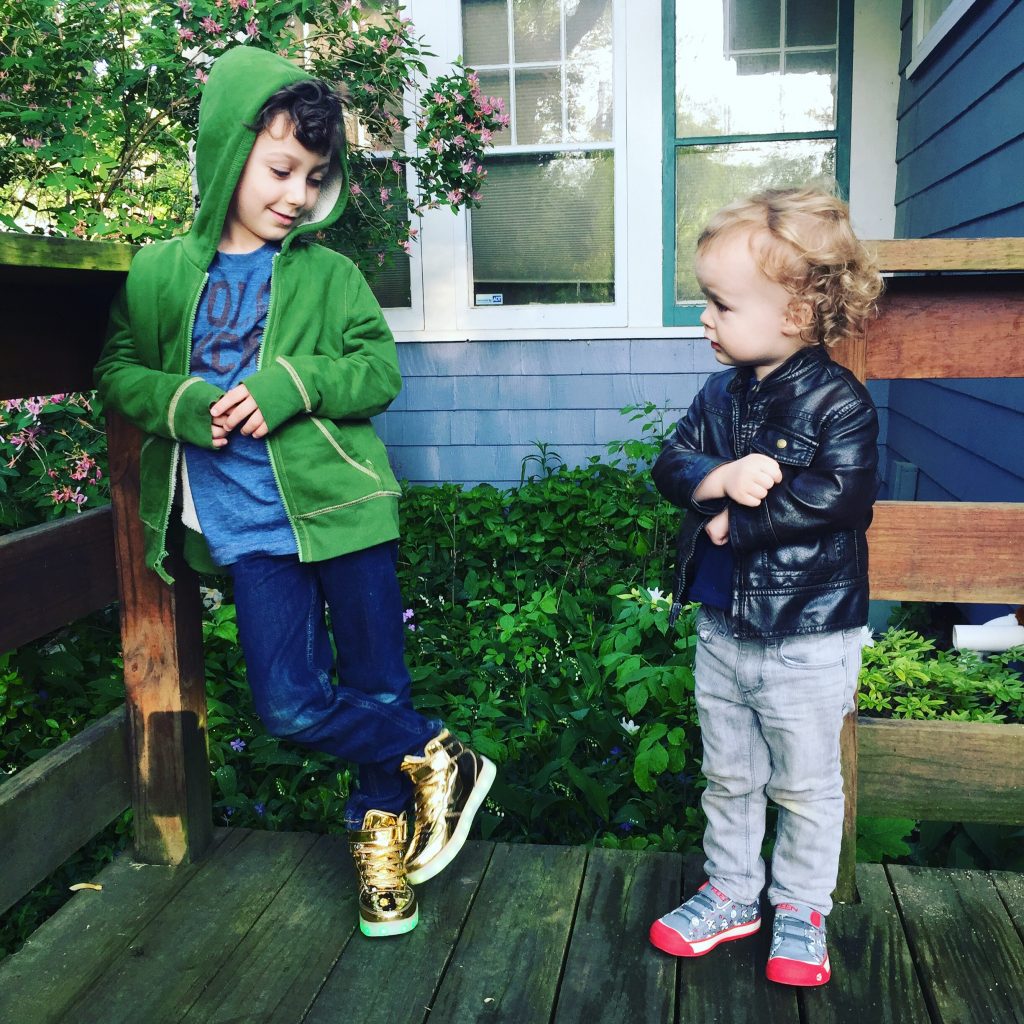The Art of Play and Movement
 Author: Nora Doebrich, SPCC Family Trauma Intervention Program Art Therapist, yoga instructor
Author: Nora Doebrich, SPCC Family Trauma Intervention Program Art Therapist, yoga instructor
As an art therapist and a yoga instructor, I obtain a tremendous amount of joy in seeing how children express their inner worlds, through their play and movement. Working within the Family Trauma Intervention Program of SPCC, I partner with both children and caregivers to gain a better understanding of the meaning of this play and movement. With this increase in understanding, caregivers can more effectively respond and connect with their children and children can more effectively express themselves.
As our external world has advanced technologically, our society has become more sedentary and less physically driven to meet our needs. This transformation has impacted the ways in which we communicate our internal needs through movement and creative expression. However, regardless of these changes, our foundational needs as humans remain the same; to be accepted, to feel loved, to be heard and understood.
Children, in particular, express their needs, emotions and thoughts through movement, as their verbal skills are still developing. It is important as caregivers, parents, therapists and community members that we teach our children how to effectively use movement and play to channel their emotions and thoughts.
Movement and play allow all of us to express the link between our minds and bodies. Movement allows us to be ourselves. We all need play and movement to counteract the stress of our external world, as well as the internal pressures we place on ourselves. Children are no exception to this. Children are faced with significant expectations, judgments and demands and often do not have the capacity to manage the magnitude of this stress.
One expectation that I frequently witness is the idea that children will sit still and if they are not able to be still, this communicates some level of dysfunction. Children need to move and we need to allow them the space and freedom to do so in a healthy manner. Through movement, children improve focus, self-regulation, body awareness, coping and relaxation skills. In providing our children with opportunities to develop these skills and express themselves within healthy limits, we are increasing their capacity to better understand themselves and the world in which they live.
Below are some examples of ways in which we can provide our children with these opportunities.
Breathing Exercises for Children
Steam Engine
1. We are going to play a game called “I’m a Little Steam Engine.” You get to pretend that you are a steam engine and I am going to listen to the steam that you make.
2. Imagine that you are a steam engine. You can be as big or as small of an engine as you would like. Decide what color you would like to be. Maybe you want to look like Thomas the train? Maybe you are a big black shiny engine. You decide.
3. Sit up straight.
4. Allow yourself to inhale, let it come naturally, no need to force, push or take a big breath.
5. As you exhale, you are going to make a “shhhhh” sound, like steam coming out of a steam engine. The steam from your engine comes out long and slow. See if you can send your steam across the room. Let’s see how long you can make your steam.
Lions Breath
1. “We are going to do a breath called the Lion’s Breath, to let go of feelings or thoughts that we no longer want. This breath is a very powerful way to get those thoughts and feelings out from inside of us.”
2. “Imagine that you are a mighty lion. You have a giant roar. Sit cross-legged or on knees and sit up tall like a proud lion. And get ready to let your roar go.”
3. “I’m going to think of a feeling or thought that I would like to let go. I squeeze my hands in fists, holding tight that feeling or thought and scrunch up my face getting ready to roar. I take a deep breath in and let my roar out, sticking my tongue out at and stretching my arms out wide, opening my hands wide.”
4. Guide: “Now it is your turn. Sit up tall. Think of the feeling or thought that you would like to roar out. Scrunch that feeling or thought into your hands and pull them up tight in front of you. Now scrunch up your face tight. Take a deep breath in. And. . . ROAR!!!!! it out, sticking your tongue out and letting your arms and hand stretch out wide in front of you. Let’s try it a few more times. Really ROAR!! it out!!!!!
Ocean Breath
1. We are going to breathe, making the sound of the ocean. Take a moment to close your eyes and see the waves crashing on the shore, listen to the sound of the surf upon the sand.
2. Start by holding the hand held mirror in front of you, (or hold your hand up, palm facing inward, holding a pretend mirror if you don’t have a real one). Take a full breath in, breathing slowly and allowing the stomach to expand/ rise. Then exhale, forcing the air out like you are trying to fog up the mirror and make the “haaaah” sound. It should be very soothing, sounding like the roar of the waves upon the sand. Repeat this practice several times.
3. Remember to exhale as long as possible and pause slightly after the exhale if possible. This allows for ultimate relaxation within the body.
Movement Activities for Children
Animal Play
Ask children favorite animal. Can you walk like that animal, breath like the animal, dance like the animal, laugh like the animal, sleep like the animal, eat like the animal, etc.?
Wiggle, Freeze, Melt
Great activity for teaching self-regulation. Ask children to wiggle individual parts of body and then freeze (becoming solid and still) and then melting (become loose and relaxed). Gradually coupling muscle groups together and then moving into wiggling the whole body.
Be Your Feelings
Similar to animal play, ask children to express emotions (happy, sad, mad, scared, excited, safe, etc) through movement. Start with facial expression, move to walk, hop, dance, crawl, etc. Be creative and have fun!




